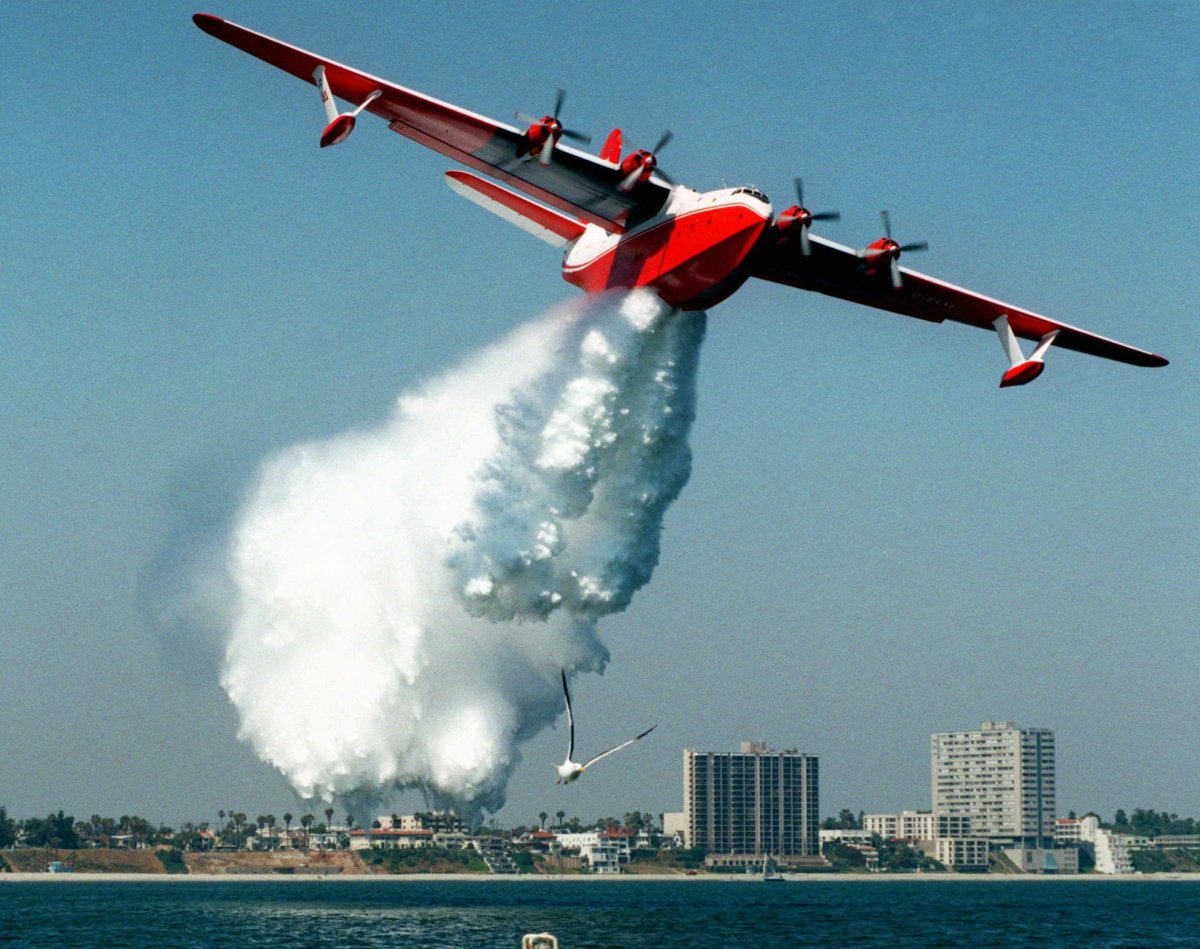With almost every wildfire season in B.C. comes a persistent question: why isn’t the province using the Martin Mars water bomber to douse the flames?

And this season, which has seen over 37,000 hectares go up in flames, has been no exception.
Coverage of the B.C. wildfires on Globalnews.ca:
Social media users have asked this very question as 219 fires burn throughout the province, according to a Monday update from the B.C. Wildfire Service.
There are a few reasons for this.
One is that the Hawaii Mars, the sole Martin Mars water bomber that can still fight fires, can’t be used right now.
It’s currently being repaired for an expected completion date in the second week of August, owner Wayne Coulson of the Port Alberni-based Coulson Group told Global News.
READ MORE: Martin Mars water bomber up for sale
There are two Martin Mars water bombers: one is the Hawaii Mars, the other one is the Philippine Mars, a plane that Coulson is looking to place in a museum.
Originally built for the U.S. Navy in the Second World War, they were later redesigned for “long-range general transport,” including water or foam to drop on wildfires.
The Hawaii Mars was damaged at an airshow in Oshkosh, Wisc. last year.
“We bumped it off the bottom of the lake and put a hole in it,” Coulson said. “So we’re just fixing the hull, doing the annual inspection to it.
“We’re preparing the plane for a firefighting season.”
Coulson said one of the Mars bomber’s main advantages is that it can drop “2,200 gallons for three and a half seconds,” while other planes drop 400 gallons per second, for two seconds.
But the plane has limitations too, said the B.C. Wildfire Service.
For one thing, it’s so big that it can only scoop up water from 113 bodies around B.C., while other amphibious planes can reach 1,700 bodies of water.
READ MORE: Martin Mars water bomber added to B.C. wildfire-fighting arsenal for 2015 fire season
“As well, given the Mars water bomber’s large drop pattern, firefighters on the ground have to stop work until the drops are completed, which may increase the risk of a fire escaping during the critical initial attack stage,” the service said in an email.
Coulson, however, disputed the province’s statistics on where the Mars could take water from before dropping it on a fire.
“We never had an issue where, if the fire wasn’t close to a water source, don’t send the Mars,” he said.
“You would find that we cover, my guess is, 80 per cent of the land base the Mars can operate on and be cost-effective.”
‘$4,400 more than all four Fire Bosses combined’
But cost is another consideration that the province has taken into account when deciding whether to use the Mars water bomber.
The province entered into a one-month contract to use the Martin Mars water bomber during the 2015 fire season.
Its standby cost was $15,000 per day and its flight time charge was $6,000 per hour; fuel, the wildfire service said, cost $5,000 per hour, and the province paid for that, too.
All told, the water bomber helped fight four fires at a cost of about $750,000 in that season.
READ MORE: Province enters into one-month contract to use Martin Mars water bomber for 2015 fire season
Meanwhile, the cost of using four amphibious water scoopers known as Fire Bosses runs to $2.5 million for an entire fire season, exclusive of an hourly flying rate.
The hourly rate for all four planes was $4,400 cheaper than it was for the Martin Mars water bomber, the wildfire service said.
Coulson disputed those figures, too.
“That’s like saying you pack 120 passengers in a Boeing 737 and it costs significantly more versus putting the same 120 passengers in 11 small aircraft and it’s cheaper,” he told Global News.
“But does the job get done?”
What B.C. is actually using to fight the forest fires
The B.C. Wildfire Service awards aviation contracts that last seven years, with options to extend for three, it told Global News in an email.
Aircraft are used in a supportive role; “they do not put out wildfires.”
They’re dispatched for various purposes, such as making an initial attack on a wildfire that “exceeds the capabilities of ground resources.”
They’re also used to support and maintain attacks on wildfires when it’s expected that ground crews could be delayed.
The aircraft includes 16 “airtankers,” which can land on water and fly in groups of up to four carrying a combined capacity of up to 16,000 litres.
A single, heavy aircraft among the airtankers can carry over 11,000 litres.
The wildfire service also operates “amphibious airtankers” that “skim” water from rivers and lakes before dropping it on fires, though they also carry foam or retardant.
This fleet includes the four “Fire Bosses.”
Helicopters, meanwhile, are largely used to transport crews and equipment, though they can also drop water and retardant on fires using a bucket.
The service has five medium-lift and one light-lift helicopter it can use during wildfires, and it contracts others on a short-term basis.











Comments